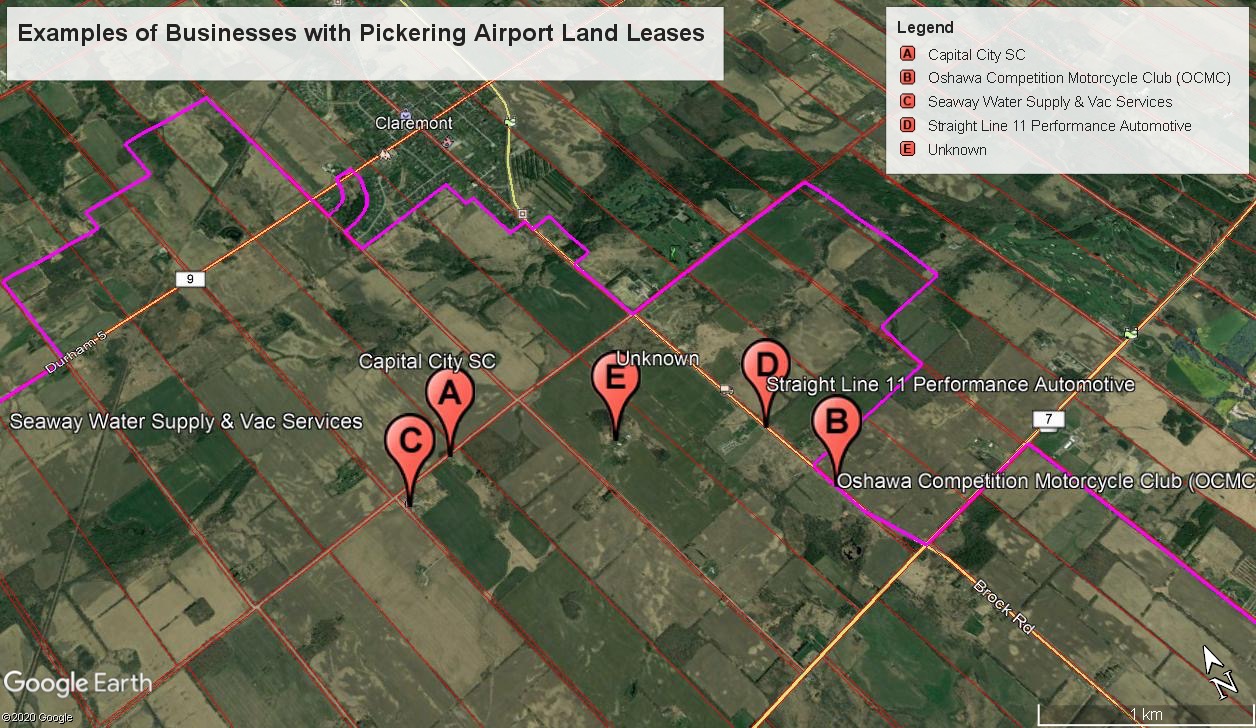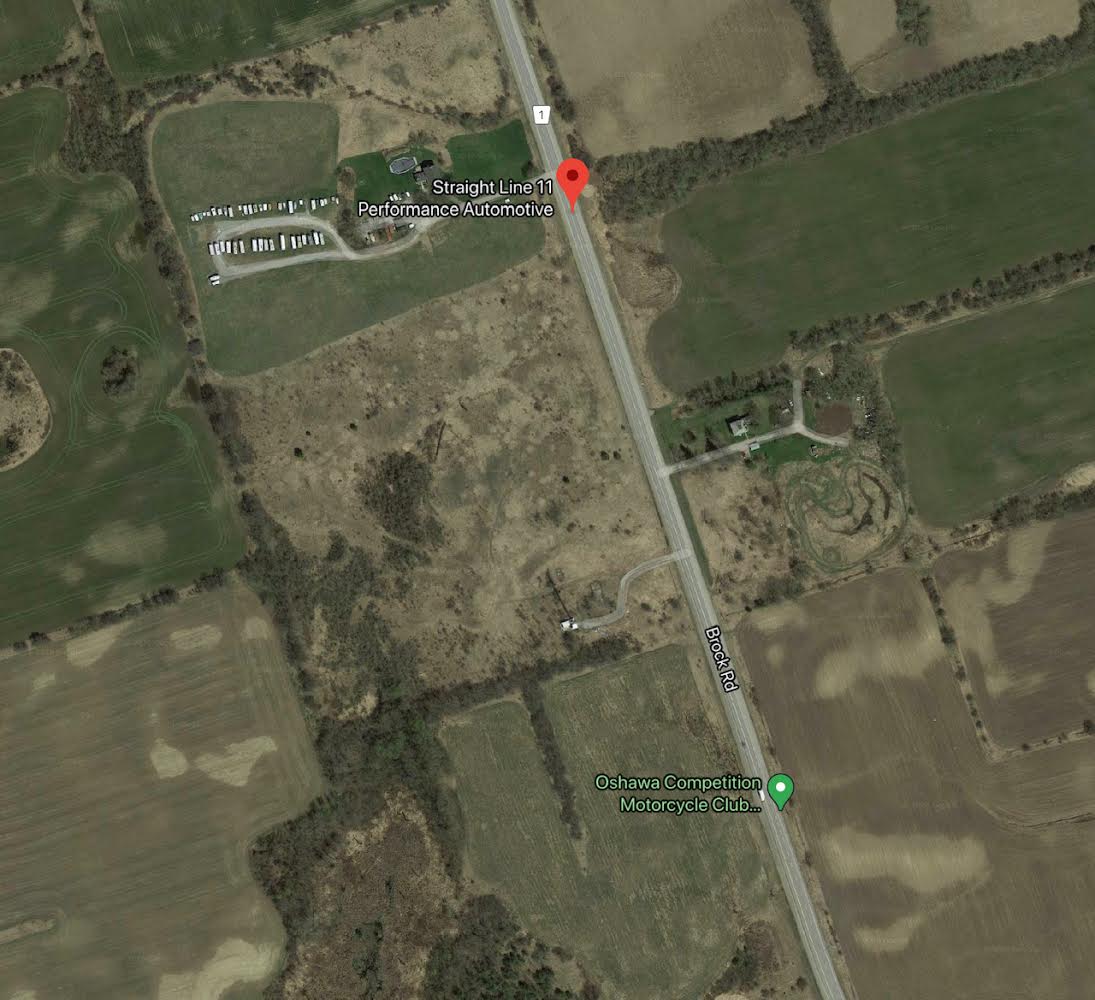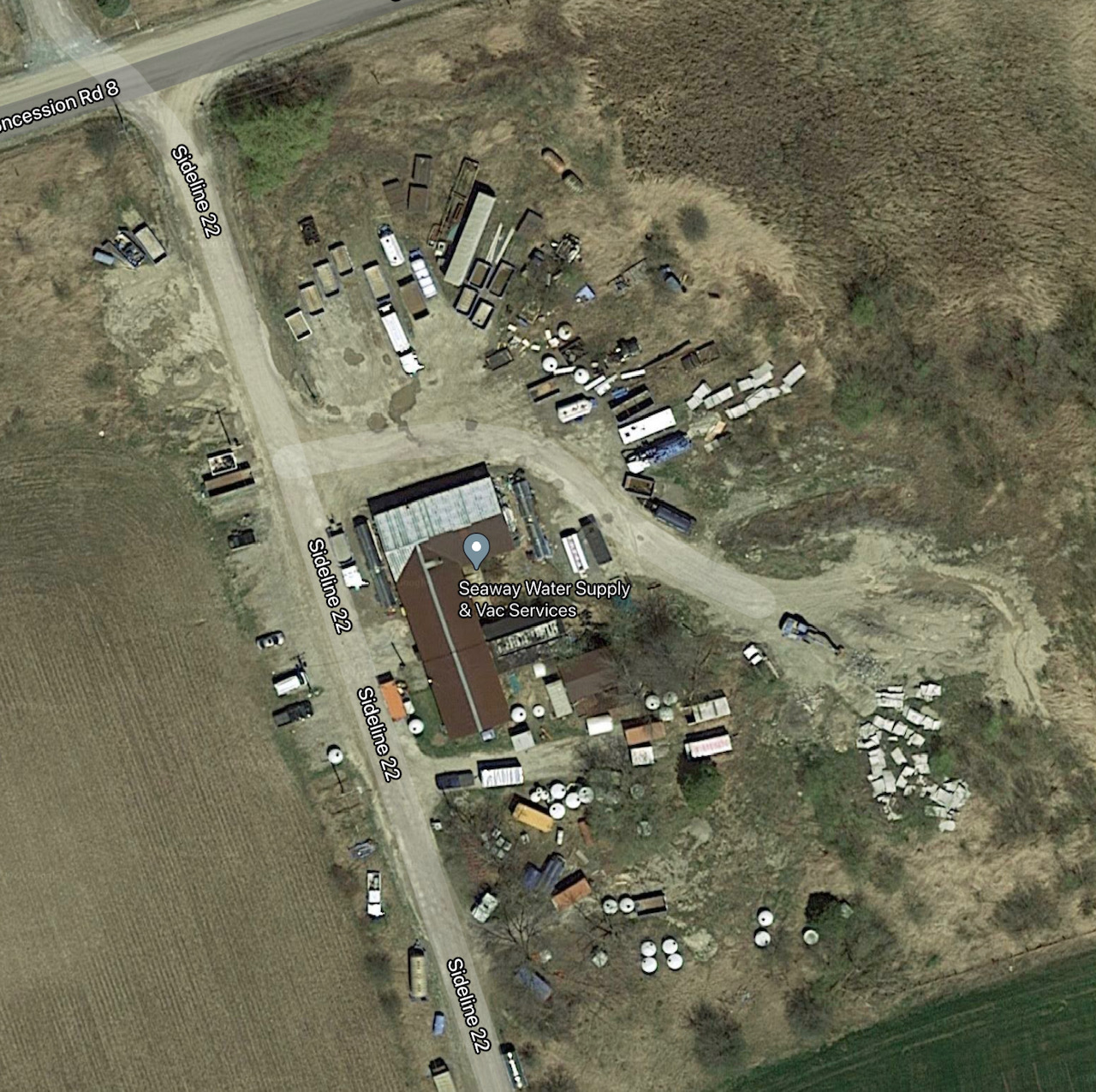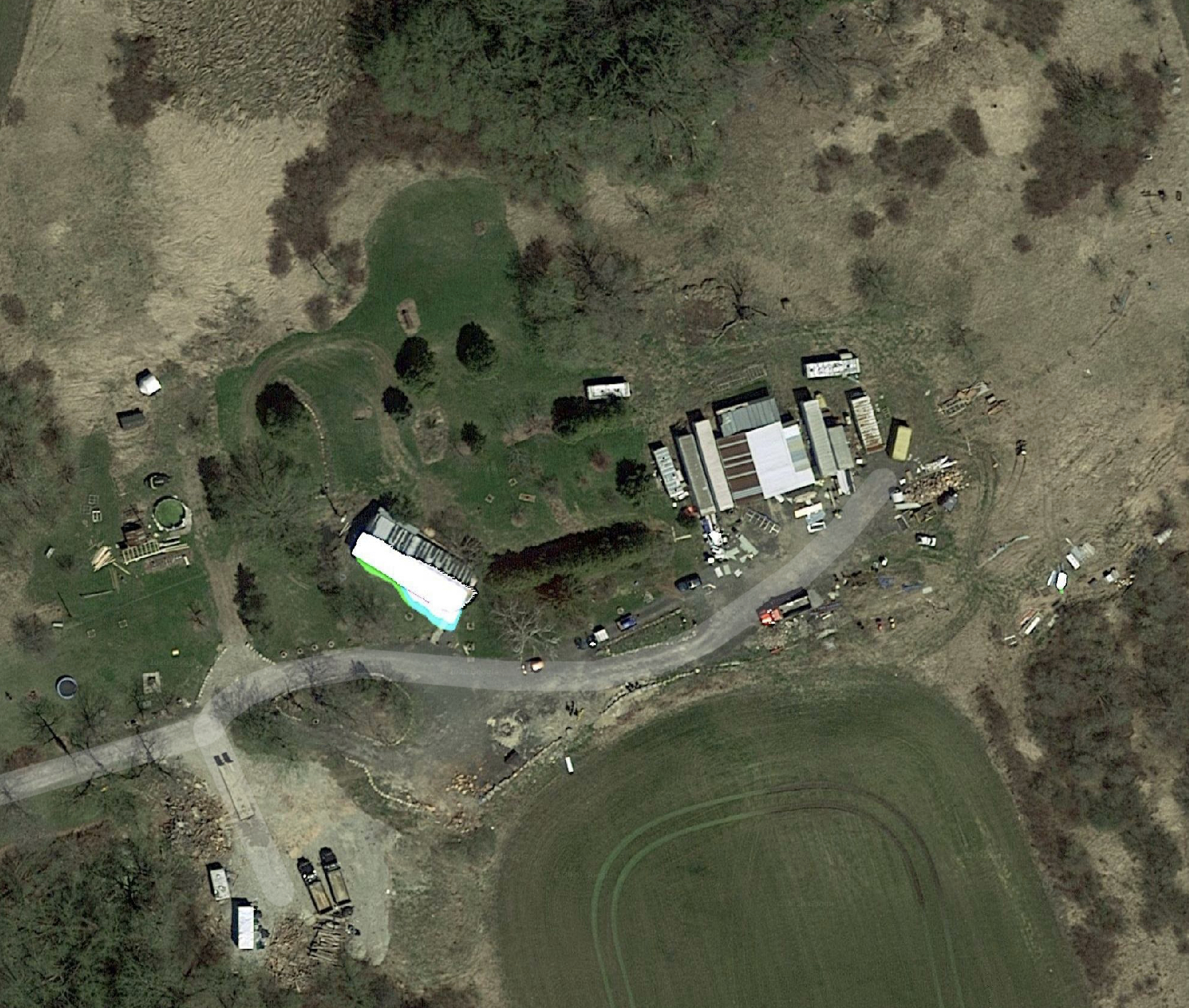Written by Mark Brooks
The recently released KPMG ASA report states that development of Pickering Airport is now viable, and suggests breaking ground on a new industrial airport in 2026. The suggestion is to start with a minimal footprint that can be expanded as needed. The new airport will be built on thousands of acres set aside for it and other economic development more than four decades ago. While waiting for the airport to become economically viable, the Pickering lands have been leased out. What will moving forward with a smaller airport mean for the current leaseholders?

The most important implication of the new airport strategy is starting with a small footprint and growing as needed. This translates into less disruption and displacement of the current leaseholders. But who goes, who stays, and who gets priority for a new lease on the airport lands not initially needed for development?
We can provide some answers by utilizing the partial list of airport land leaseholders just received in response to a FOI (Freedom Of Information) request. Unfortunately, it is not a complete list with more than a third of all leaseholders’ names redacted. This lack of transparency leaves open the opportunity for insider activity and corruption. That issue aside, it seems natural to prioritize the businesses who are providing a local service over soybean and corn crops grown by commercial farms. The land is, after all, set aside for business development and the businesses that are publicly known appear to create far more jobs and economic value than a soybean crop.
The area expected to be used in the first phase of the airport development is roughly North of Highway 7, West of Brock, east of North Road and south of the Havelock subdivision rail tracks. This initial development zone will need to be validated by an RFP (Request For Proposal) from Transport Canada who manages the lands. The sooner the RFP is undertaken, the more certainty that will be created for the current leaseholders.
There are no organic vegetable farms or other high value agricultural infrastructure in this area. There is a handful of leased houses, but the Hamlet of Brougham and its residents can remain in place as can GlenCedars Golf Club. Together the known businesses that advertise their location utilize less than 5% of the land, but appear to be responsible for the majority of economic activity and job creation. How the land is used by some of the unknown leaseholders remains a mystery.
A high–level look at just the Northeast corner of the Pickering lands shows at least five businesses with land leases:
- A) Capital City SC (Schutzhund Club), 6.5 acres
- B) Oshawa Competition Motorcycle, 30 acres
- C) Seaway Water Supply and Vac Service, 4.2 acres
- D) Straight Line 11 Performance Automotive, possibly multiple leases.
- E) An example of the unknown. listed as Lot 20 Concession 7 in a response to a FOI request, the leaseholder name is redacted. Believed to be two leases, 5.3 and 10 acres.




These businesses create jobs, wealth, and add to our community. It is important that the airport development timeline provides an opportunity for them to transition to other locations successfully. Time will be needed to remove junk, undertake an environmental assessment and perform remediation of the sites where identified. This could take four to five years. Without proper planning, one or more of these companies could decide to walk away from their leases. The taxpayer could be stuck with a significant clean-up bill.
It is time to stop playing politics. While it might be great fun for a few politicians to garner donations and support by pretending the airport development is not happening, it is counter productive to good planning. What is needed is proper planning, leadership, and foresight. For that, Transport Canada needs to initiate an EA (Environmental Assessment) and to get going on an RFP (Request For Proposal). Private investors will need time to prepare and respond. These responses will establish a realistic timeline, process, and cost/value proposition for the Airport Project.
The people and businesses that now lease and rely on the Pickering Airport lands deserve nothing less. The taxpayers of Canada that own the billion dollar Pickering Land reserve also expects their investment to be properly managed for the benefit of all. It is time to move forward with the development of Pickering Airport and sort out which leaseholders wish to be part of the future.
references:
Transport Canada Pickering Lands
Straight Line 11 Performance Automotive